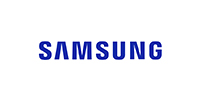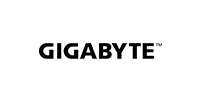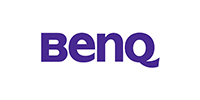Nasdaq Composite: Market Trends, Performance & Future Predictions

Nasdaq Composite: Market Trends, Performance & Future Predictions

The Nasdaq Composite is a major stock market index that tracks over 3,000 companies listed on the Nasdaq Stock Market. As a key indicator of the Nasdaq Composite Market Performance, it reflects trends in technology and growth stocks. Investors rely on Nasdaq Composite Updates to analyze market movements and make informed decisions. Understanding Nasdaq Composite Performance is essential for traders and analysts, as it helps predict future trends. This article explores key Nasdaq Composite Future Predictions for 2025, along with expert insights into how market forces will shape its trajectory.
What is the Nasdaq Composite?
The Nasdaq Composite is a stock market index that tracks over 3,000 companies listed on the Nasdaq exchange. Unlike the S&P 500, which includes only the top 500 firms, the Nasdaq Composite Market Performance reflects a broader range of stocks, with a heavy focus on the technology sector.
🔍 How is the Nasdaq Composite Calculated?
This index is calculated using a market-capitalization-weighted method, meaning that larger companies like Apple, Microsoft, and Nvidia have a bigger influence on the overall Nasdaq Composite Performance. Investors and analysts rely on this data to assess the health of the stock market.
📊 Nasdaq Composite vs. Other Major Indices
Many traders compare the Nasdaq Composite with the Dow Jones Industrial Average and S&P 500 to gauge economic trends. Below is a comparison of key differences:
| Index | Stocks Included | Focus |
|---|---|---|
| Nasdaq Composite | 3,000+ stocks | Technology & growth stocks |
| Nasdaq 100 | Top 100 non-financial Nasdaq stocks | Large-cap tech companies |
| S&P 500 | 500 largest U.S. stocks | Broad market performance |
🌍 Why Investors Follow the Nasdaq Composite
The Nasdaq Composite Future Predictions indicate that its performance often sets the tone for global stock markets. Investors use official Nasdaq updates and market analytics from Bloomberg to predict potential shifts.
📢 Stay Updated on Nasdaq Composite Market Trends
Want the latest Nasdaq Composite Updates? Read our related posts:
📈 Nasdaq Composite Performance in 2025
The Nasdaq Composite Performance in 2025 has been shaped by economic policies, technological growth, and investor sentiment. As a key indicator of market health, the Nasdaq Composite Market Performance reflects the strength of the technology sector and high-growth companies. With increasing AI adoption and financial innovations, the market is rapidly evolving. AI in finance is one of the biggest game changers driving this transformation.
🔹 How Has Nasdaq Performed in 2025?
Despite economic uncertainties, the Nasdaq Composite has maintained an upward trend. Major tech giants like Apple, Microsoft, Nvidia, and Tesla continue to drive growth, contributing to positive market momentum. The surge in AI-powered trading has also influenced the index by improving market efficiency.
| Month | Nasdaq Composite Value | Monthly Change (%) |
|---|---|---|
| January | 17,800 | +2.1% |
| February | 18,000 | +1.2% |
| March | 18,250 | +1.4% |
📌 Key Drivers of Nasdaq’s Growth
- Federal Reserve’s Interest Rate Decisions: Lower interest rates have boosted stock market confidence.
- AI and Automation: The rapid growth of AI-driven businesses has increased stock valuations.
- Strong Earnings from Tech Giants: High-performing companies have helped stabilize and elevate the index.
📉 Market Corrections and Challenges
Although the overall Nasdaq Composite Market Performance has been positive, challenges like inflation, tech sector regulation, and global economic uncertainties have caused occasional pullbacks. Entrepreneurs and investors are turning to business insurance to mitigate financial risks.
🌍 Global Influence on Nasdaq Composite
External factors like geopolitical tensions, economic slowdowns, and changing investment strategies have influenced Nasdaq Composite Future Predictions. Experts closely watch international markets for potential ripple effects. Meanwhile, small businesses are leveraging resources from organizations like the Small Business Administration (SBA) to navigate uncertain markets.
For real-time updates, visit the Nasdaq Official Website or check the latest Bloomberg Market Reports.
🔎 Factors Affecting Nasdaq Composite in 2025
The Nasdaq Composite is influenced by several key factors in 2025. From economic policies to technological breakthroughs, these elements shape the Nasdaq Composite Market Performance and its future trends. Investors closely monitor these developments to make informed decisions.
📌 1. Federal Reserve Policies & Interest Rates
Monetary policy remains a major driver of Nasdaq Composite Performance. Lower interest rates often fuel stock market growth, making tech investments more attractive. However, if the Fed raises rates to curb inflation, it could lead to market volatility.
📌 2. AI & Tech Industry Growth
The rapid expansion of AI and automation is reshaping the financial markets. Companies leveraging AI-driven trading strategies are gaining a competitive edge. Additionally, AI in finance is revolutionizing market predictions and investment strategies.
📌 3. Global Economic Conditions
Factors such as inflation, recession risks, and geopolitical instability impact investor sentiment. A strong global economy supports bullish trends, while economic downturns can lead to market corrections.
📌 4. Major Tech Stocks Driving the Nasdaq Composite
The Nasdaq is heavily weighted with tech giants like Apple, Microsoft, Nvidia, and Amazon. Their earnings reports and growth strategies significantly impact the Nasdaq Composite Future Predictions.
📌 5. Innovation & Emerging Technologies
Advancements in blockchain, quantum computing, and fintech are reshaping investment trends. Businesses are adapting by securing business insurance to protect against financial risks in a rapidly changing market.
📌 6. Investor Sentiment & Market Trends
Investor behavior is shaped by both short-term news cycles and long-term market outlooks. Small businesses are leveraging resources from the Small Business Administration (SBA) to adapt to changing financial conditions.
For expert insights and forecasts, check the latest reports on Nasdaq’s official website or Bloomberg’s market analysis.
📅 Nasdaq Composite Future Predictions (2025-2030)
The long-term outlook for the Nasdaq is shaped by economic policies, technological advancements, and investor sentiment. Analysts predict both bullish and bearish scenarios as new industries emerge and financial markets evolve.
📌 1. Market Growth Expectations
Financial experts anticipate steady growth in the tech sector, with AI, blockchain, and renewable energy driving innovation. Companies investing in these technologies could see significant valuation increases.
📌 2. Impact of AI & Automation
Automation is transforming financial markets, with AI-driven trading platforms playing a crucial role. Quantum AI trading is expected to increase market efficiency, reducing volatility and improving forecasting accuracy.
📌 3. Bullish vs. Bearish Scenarios
Bullish Predictions: A strong economy, low inflation, and continued tech dominance could push the Nasdaq to new highs.
Bearish Risks: Economic slowdowns, regulatory changes, or geopolitical instability may trigger corrections.
📌 4. Tech Sector Leadership
Companies like Apple, Google, and Tesla will likely continue driving market performance. Emerging startups focusing on AI, cybersecurity, and quantum computing could also shape future trends.
📌 5. Investment Strategies for the Future
Investors are advised to diversify their portfolios, balancing tech stocks with stable assets. ETFs tracking the Nasdaq provide exposure with lower risk. Learn more about market adaptation in our guide on AI’s role in finance.
For expert analysis, check out Nasdaq’s official market insights and Bloomberg’s financial outlook.
📌 How to Invest in Nasdaq Composite
Investing in the Nasdaq provides exposure to leading tech stocks and high-growth companies. Whether you’re a beginner or an experienced trader, choosing the right investment approach is crucial.
📌 1. Direct Stock Investments
Investors can buy individual stocks of Nasdaq-listed companies like Apple, Microsoft, and Tesla. However, this requires careful research to manage risks effectively.
📌 2. Investing Through ETFs
Exchange-traded funds (ETFs) like Invesco QQQ track the Nasdaq-100, offering diversified exposure with lower risk. ETFs are ideal for long-term investors seeking stable returns.
📌 3. Best Platforms for Investing
Several online platforms allow users to invest in Nasdaq stocks and ETFs, including:
| Investment Platform | Features |
|---|---|
| eToro | Social trading, fractional shares, commission-free trades |
| Fidelity | Strong research tools, no-fee ETFs |
| Robinhood | Zero commissions, easy-to-use app |
📌 4. Risk Factors & Investment Strategies
The Nasdaq can be volatile, with rapid price fluctuations. Investors should diversify their portfolios and stay informed about AI-driven financial trends to mitigate risks.
For a deeper understanding, Nasdaq Composite Updates, explore Nasdaq’s official investment resources and Investopedia’s market guides.
💡 Nasdaq Composite vs. S&P 500: Key Differences
Investors often compare the Nasdaq Composite and S&P 500 when deciding on market exposure. While both track U.S. stocks, they have different compositions, risk levels, and investment appeal.
📌 1. Overview of Both Indices
The Nasdaq Composite includes over 3,000 stocks, heavily weighted towards the tech sector. The S&P 500, on the other hand, consists of 500 large-cap companies across multiple industries, offering broader market exposure.
📌 2. Performance & Volatility
The Nasdaq is known for higher growth potential but also greater volatility due to its tech-heavy composition. The S&P 500 provides more stability, making it a safer choice for conservative investors.
📌 3. Key Differences at a Glance
| Feature | Nasdaq Composite | S&P 500 |
|---|---|---|
| Number of Stocks | 3,000+ | 500 |
| Sector Focus | Technology & Growth Stocks | Diversified Across All Sectors |
| Risk Level | Higher Volatility | Lower Volatility |
| Investment Appeal | High Growth Potential | Balanced Growth & Stability |
📌 4. Which Index is Better for Investors?
For aggressive investors, the Nasdaq offers opportunities in fast-growing tech companies.
For long-term stability, the S&P 500 provides a safer investment strategy.
Want to explore stock market trends & Nasdaq Composite Updates? Check out our in-depth guide on AI’s role in finance.
For more insights on Nasdaq Composite Updates, visit Nasdaq’s official site and Investopedia’s stock market analysis.
🌍 Global Economic Trends & Market Influence
Stock markets are shaped by a wide range of economic and geopolitical factors. From central bank policies to emerging industries, understanding these trends can help investors make informed decisions.
📌 Interest Rates & Inflation
Central banks, such as the Federal Reserve, influence market performance through interest rate policies. High rates can slow down economic growth, while lower rates often encourage investment in riskier assets.
📌 Tech Sector Innovation
Advancements in artificial intelligence, blockchain, and automation continue to redefine industries. The technology sector plays a major role in shaping market trends, making it a key area to watch.
📌 Global Trade & Supply Chains
Trade agreements, tariffs, and supply chain disruptions impact global financial markets. Investors monitor these developments closely, as they can lead to shifts in market sentiment and stock performance.
📌 Investor Sentiment & Market Volatility
Economic uncertainty and investor confidence influence stock price movements. Volatility often creates opportunities for strategic investors looking for long-term gains.
For those tracking Nasdaq Composite Updates, staying informed about these global trends is essential. Investors who adapt to economic shifts and industry changes are better positioned for success.
Get real-time Nasdaq Composite Updates by following high-authority sources like Nasdaq and Bloomberg Market Trends.
📈 Market Volatility & Investment Opportunities
Volatility is an inherent part of the stock market, creating both risks and opportunities for investors. Understanding how price fluctuations occur and what drives market sentiment can help in making better investment decisions.
📌 Causes of Market Volatility
Fluctuations in stock prices are often triggered by earnings reports, economic data releases, and geopolitical events. High-impact news can cause rapid shifts in investor sentiment, leading to market swings.
📌 Sectors That Benefit from Volatility
While market downturns can be challenging, certain sectors—such as technology, healthcare, and energy—often present opportunities. Investors who monitor these industries closely can find potential growth stocks.
📌 Strategies for Navigating Uncertain Markets
Diversification, stop-loss strategies, and long-term investing approaches can help mitigate risks. Investors who stay informed about global events and economic policies are better equipped to handle market fluctuations.
Following Nasdaq Composite Updates is essential for understanding market trends and making informed decisions. Investors can leverage real-time data and expert analysis to stay ahead of sudden market movements.
Stay informed with the latest Nasdaq Composite Updates by exploring trusted sources like Nasdaq and CNBC Market News.
📢 Final Thoughts
The Nasdaq Composite remains a critical benchmark for tracking market trends, especially within the technology sector. Its performance reflects investor sentiment and economic conditions, making it essential for traders and long-term investors alike.
📌 The Nasdaq’s Market Position
With its focus on high-growth stocks, the Nasdaq continues to dominate the financial markets. Investors looking for high returns must stay updated on key trends affecting the index.
📌 Staying Updated on Nasdaq Composite Performance
To make informed investment decisions, regularly monitor market trends and economic indicators. Explore resources like:
- AI’s impact on financial markets
- Quantum AI Trading insights
- Nasdaq’s official website for real-time updates
- Bloomberg Market Trends
📌 Stay Ahead in the Market
Whether you’re investing directly in Nasdaq stocks, ETFs, or using AI-powered trading strategies, staying informed is key to maximizing returns. Bookmark our Finance category for expert market insights & more Nasdaq Composite Updates.
📢 Subscribe for Real-Time Nasdaq Updates!
Want to stay ahead of market trends? Subscribe to our newsletter for the latest Nasdaq Composite insights and financial news.
📊 Smart Investment Strategies for a Changing Market
Market conditions are constantly evolving, driven by economic policies, technological advancements, and investor sentiment. Understanding these trends can help investors make informed decisions.
📌 Understanding Market Cycles
Financial markets go through cycles of expansion and contraction. Recognizing these phases can help investors adjust their strategies accordingly. During growth periods, high-risk assets may perform well, while defensive stocks and bonds provide stability during downturns.
📌 The Role of Technology in Modern Investing
Artificial intelligence and algorithmic trading have transformed the way investors approach the stock market. Automated trading systems, AI-driven analytics, and blockchain-based finance tools are now influencing global markets.
📌 Diversification: Balancing Risk & Reward
Investors who diversify their portfolios across different sectors and asset classes can reduce risk while maintaining steady returns. A well-balanced mix of technology, healthcare, and energy stocks, combined with bonds and commodities, can provide long-term stability.
📌 Long-Term vs. Short-Term Strategies
Some investors prefer long-term strategies, focusing on steady growth and compounding returns. Others engage in short-term trading, capitalizing on market fluctuations. Understanding the risks and benefits of both approaches can help investors align with their financial goals.
📌 Staying Ahead with Market Research
Successful investors rely on data-driven decision-making. Keeping track of market reports, earnings releases, and global economic trends can provide insights into future performance.
Explore more insights in our Finance section to get morw Nasdaq Composite Update, market trends and investment opportunities.
📌 Frequently Asked Questions (FAQs)
What is the Nasdaq Composite Index?
The Nasdaq Composite Index is a market-capitalization-weighted index that includes over 3,000 stocks listed on the Nasdaq stock exchange, primarily from the technology sector.
How is the Nasdaq Composite different from the Nasdaq 100?
The Nasdaq Composite tracks all Nasdaq-listed stocks, while the Nasdaq 100 includes the 100 largest non-financial companies, making it a more selective index.
What factors influence the Nasdaq Composite’s performance?
The index is affected by Federal Reserve policies, interest rates, tech industry growth, inflation trends, and the performance of major stocks like Apple, Microsoft, and Nvidia.
Is investing in Nasdaq Composite a good idea?
It depends on your risk tolerance. Nasdaq stocks tend to offer high growth potential but can be volatile. Consider ETFs for diversification or individual stock investments based on market trends.
Where can I track real-time Nasdaq Composite updates?
You can check real-time updates on Nasdaq’s official site or financial news platforms like Bloomberg and Investopedia.
📢 Conclusion
The Nasdaq Composite remains a crucial indicator of stock market performance, especially for investors focusing on the technology sector. Its trends and volatility provide valuable insights into market conditions.
Understanding key factors like Federal Reserve policies, tech sector influence, and global economic trends will help investors navigate market fluctuations.
Whether you’re investing in Nasdaq ETFs or individual stocks, staying informed is critical. Explore our Finance category for more expert insights.
Get real-time updates by following trusted financial sources like Nasdaq and Bloomberg Market Trends.














